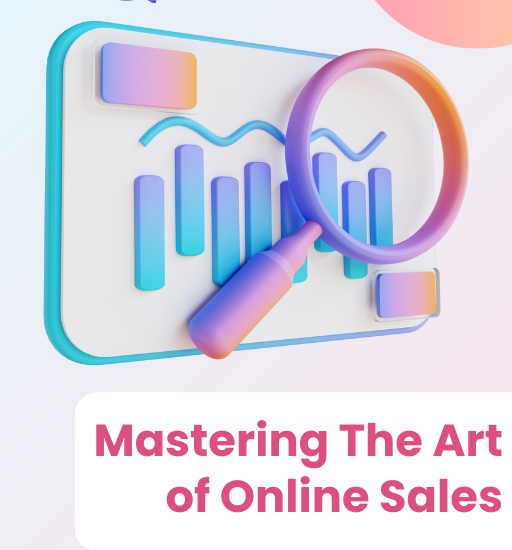mastering the art of online sale
Mastering the art of online sales requires a strategic blend of customer insight, technical optimization, and adaptive marketing. Here’s a structured approach to elevate your e-commerce game:
1. Deep Audience Understanding
- Buyer Personas: Develop personas using data from Google Analytics, surveys, and social media insights. Include psychographics (interests, pain points) beyond demographics.
- Segmentation: Categorize audiences by behavior (e.g., frequent buyers, cart abandoners) and tailor campaigns using tools like Mailchimp or HubSpot.
- Competitor Analysis: Study competitors’ customer reviews on platforms like Trustpilot to identify unmet needs.
2. Website Optimization
- UX/UI Design: Implement A/B testing for layouts (e.g., Grid vs. List views). Use tools like Hotjar for heatmaps to track user behavior.
- Mobile-First: Ensure responsive design; test using Google’s Mobile-Friendly Test. Simplify checkout with one-click options.
- Speed & Security: Use Cloudflare or PageSpeed Insights to boost load times. Display SSL badges and trusted payment logos (e.g., PayPal).
- Product Presentation: Use 360-degree images and video demos. Incorporate storytelling in descriptions (e.g., “This backpack survived Everest!”).
3. Data-Driven Marketing
- SEO: Target long-tail keywords with tools like Ahrefs. Create pillar content (e.g., “Ultimate Guide to Skincare”) to boost authority.
- Social Commerce: Leverage Instagram Shops and TikTok hashtag challenges. Run UGC campaigns (e.g., “Tag us in your #OOTD”).
- Paid Ads: Use Google Shopping ads for high-intent buyers. Retarget cart abandoners with dynamic ads on Facebook.
- Email Automation: Deploy drip campaigns (e.g., welcome series, post-purchase upsells) with personalized recommendations.
4. Customer Retention Strategies
- Loyalty Programs: Tiered systems (e.g., Silver, Gold) with exclusive perks. Offer birthday discounts via CRM-triggered emails.
- Post-Purchase Engagement: Send follow-ups with review requests and related product suggestions (e.g., “Customers who bought this also liked…”).
- Service Excellence: Integrate chatbots (e.g., Zendesk) for instant support. Highlight hassle-free returns on product pages.
5. Analytics & Iteration
- KPIs: Monitor CLV, cart abandonment rate, and ROAS. Use Google Analytics’ E-commerce Tracking for granular insights.
- A/B Testing: Experiment with CTAs (“Buy Now” vs. “Add to Cart”) and checkout flows. Prioritize tests based on funnel drop-offs.
6. Leverage Trends & Tech
- Social Commerce: Create shoppable Reels or Pinterest Idea Pins.
- AI & AR: Use ChatGPT for 24/7 queries or Virtusize for virtual try-ons.
- Sustainability: Highlight eco-friendly packaging or carbon-neutral shipping in product listings.
7. Scaling Smartly
- Automation Tools: Manage inventory with TradeGecko, automate emails via Klaviyo.
- Outsource: Delegate content creation to platforms like Upwork or customer service to remote teams.
8. Avoid Pitfalls
- Mobile Neglect: Ensure all pop-ups are mobile-friendly.
- Weak Copy: Use benefit-driven language (e.g., “Stay cozy all winter” vs. “100% wool”).
- Feedback Loops: Act on reviews (e.g., address sizing issues highlighted in feedback).
9. Psychological Triggers
- Scarcity/Urgency: Display low-stock alerts or time-limited discounts.
- Social Proof: Show bestseller badges and influencer endorsements.
10. Global & Inclusive Reach
- Localization: Offer multi-currency pricing and translate key pages for international markets.
- Accessibility: Add alt text to images and ensure screen-reader compatibility.
Example: Gymshark’s UGC-driven Instagram strategy boosted engagement by 200%, while ASOS’s detailed size guides reduced returns by 50%.
Key Takeaway: Continuously test, learn, and adapt. Align every strategy with customer needs, and let data guide your evolution. 🚀
